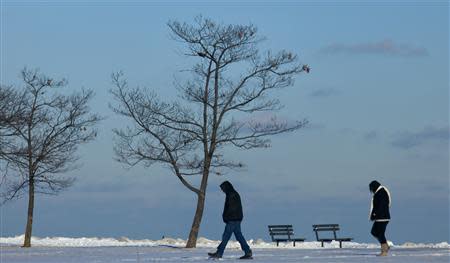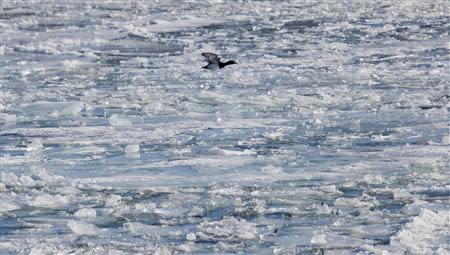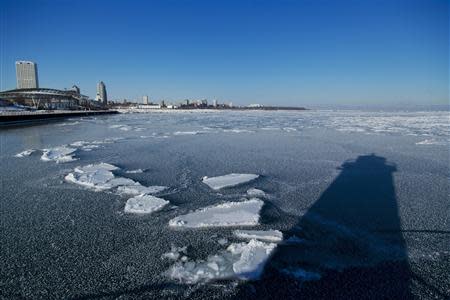Arctic air grips U.S. Midwest; temperatures to moderate next week
CHICAGO (Reuters) - The U.S. Midwest endured another frigid morning on Friday and another spell of sub-zero (Fahrenheit) temperatures is forecast for early next week, but temperatures should moderate after that, an agricultural meteorologist said. "Once we get past middle of next week, we do begin to see things moderate. By the middle of the month, it looks like it will be not nearly as cold," said Kyle Tapley, a meteorologist with MDA Weather Services. A series of winter storms interspersed with bouts of arctic cold in recent weeks has slowed the movement of grains and livestock through the Farm Belt, crimped supplies of natural gas and propane and built up ice on parts of the Illinois and Mississippi Rivers, jamming barge movement. The cold has also raised the risk of damage to soft red winter wheat in the Midwest and hard red winter wheat in the southern Plains, although widespread snowfall from a storm earlier this week likely protected most crops from the latest cold spell. Winter wheat is dormant and mostly resistant to freeze injury at this time of year, but nonetheless, temperatures that dip below zero F (minus 18 degrees Celsius) for four hours or more can damage crops lacking snow cover. Temperatures overnight fell to minus 5 to minus 10 degrees F across most of Illinois and Indiana. "Most fields were protected by snow, but spotty winterkill is possible in far southeast Illinois/southwest Indiana," the Commodity Weather Group said in a daily note. Temperatures on Saturday will not be quite as cold as a storm crosses the area, bringing light to moderate snow to Iowa, Wisconsin and northern Illinois. More sub-zero readings are expected in the Midwest for the first half of next week. After that, temperatures should return to more normal levels, Tapley said. In South America, rains are forecast to continue in corn and soy areas of Argentina for the next five days before shifting northward, but flooding risks are seen as isolated. In Brazil, mostly dry conditions persist in central and northeastern corn and soy areas. But extended outlooks, for late next week and beyond, looked wetter. Tapley said the forecast "has moved a bit in the wetter direction in Brazil, and it still looks fairly wet in Argentina." (Reporting by Julie Ingwersen; Editing by Marguerita Choy)



